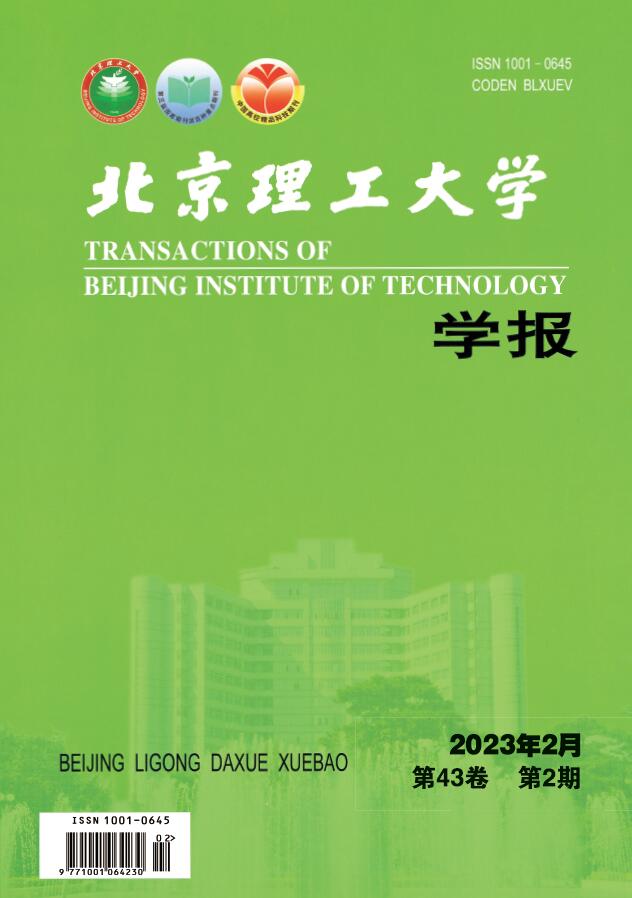2019 Vol. 39, No. S1
Display Method:
2019, 39(S1): 1-5.
doi:10.15918/j.tbit1001-0645.2019.s1.001
Abstract:
2019, 39(S1): 6-11.
doi:10.15918/j.tbit1001-0645.2019.s1.002
Abstract:
2019, 39(S1): 12-18.
doi:10.15918/j.tbit1001-0645.2019.s1.003
Abstract:
2019, 39(S1): 19-27.
doi:10.15918/j.tbit1001-0645.2019.s1.004
Abstract:
2019, 39(S1): 28-32.
doi:10.15918/j.tbit1001-0645.2019.s1.005
Abstract:
2019, 39(S1): 33-37.
doi:10.15918/j.tbit1001-0645.2019.s1.006
Abstract:
2019, 39(S1): 38-42.
doi:10.15918/j.tbit1001-0645.2019.s1.007
Abstract:
2019, 39(S1): 43-47.
doi:10.15918/j.tbit1001-0645.2019.s1.008
Abstract:
2019, 39(S1): 48-51.
doi:10.15918/j.tbit1001-0645.2019.s1.009
Abstract:
2019, 39(S1): 52-56.
doi:10.15918/j.tbit1001-0645.2019.s1.010
Abstract:
2019, 39(S1): 57-61.
doi:10.15918/j.tbit1001-0645.2019.s1.011
Abstract:
2019, 39(S1): 62-65.
doi:10.15918/j.tbit1001-0645.2019.s1.012
Abstract:
2019, 39(S1): 66-70.
doi:10.15918/j.tbit1001-0645.2019.s1.013
Abstract:
2019, 39(S1): 71-76.
doi:10.15918/j.tbit1001-0645.2019.s1.014
Abstract:
2019, 39(S1): 77-82.
doi:10.15918/j.tbit1001-0645.2019.s1.015
Abstract:
2019, 39(S1): 83-89.
doi:10.15918/j.tbit1001-0645.2019.s1.016
Abstract:
2019, 39(S1): 90-96.
doi:10.15918/j.tbit1001-0645.2019.s1.017
Abstract:
2019, 39(S1): 97-101.
doi:10.15918/j.tbit1001-0645.2019.s1.018
Abstract:
2019, 39(S1): 102-107.
doi:10.15918/j.tbit1001-0645.2019.s1.019
Abstract:
2019, 39(S1): 108-115.
doi:10.15918/j.tbit1001-0645.2019.s1.020
Abstract:
2019, 39(S1): 116-121.
doi:10.15918/j.tbit1001-0645.2019.s1.021
Abstract:
2019, 39(S1): 122-125.
doi:10.15918/j.tbit1001-0645.2019.s1.022
Abstract:
2019, 39(S1): 126-131.
doi:10.15918/j.tbit1001-0645.2019.s1.023
Abstract:
2019, 39(S1): 132-135.
doi:10.15918/j.tbit1001-0645.2019.s1.024
Abstract:
2019, 39(S1): 136-140.
doi:10.15918/j.tbit1001-0645.2019.s1.025
Abstract:
2019, 39(S1): 141-146.
doi:10.15918/j.tbit1001-0645.2019.s1.026
Abstract:
2019, 39(S1): 147-152.
doi:10.15918/j.tbit1001-0645.2019.s1.027
Abstract:
2019, 39(S1): 153-158.
doi:10.15918/j.tbit1001-0645.2019.s1.028
Abstract:
2019, 39(S1): 159-163.
doi:10.15918/j.tbit1001-0645.2019.s1.029
Abstract:
2019, 39(S1): 164-167.
doi:10.15918/j.tbit1001-0645.2019.s1.030
Abstract:
2019, 39(S1): 168-175.
doi:10.15918/j.tbit1001-0645.2019.s1.031
Abstract:
2019, 39(S1): 176-180.
doi:10.15918/j.tbit1001-0645.2019.s1.032
Abstract:
2019, 39(S1): 181-185.
doi:10.15918/j.tbit1001-0645.2019.s1.033
Abstract:
2019, 39(S1): 186-190.
doi:10.15918/j.tbit1001-0645.2019.s1.034
Abstract:


